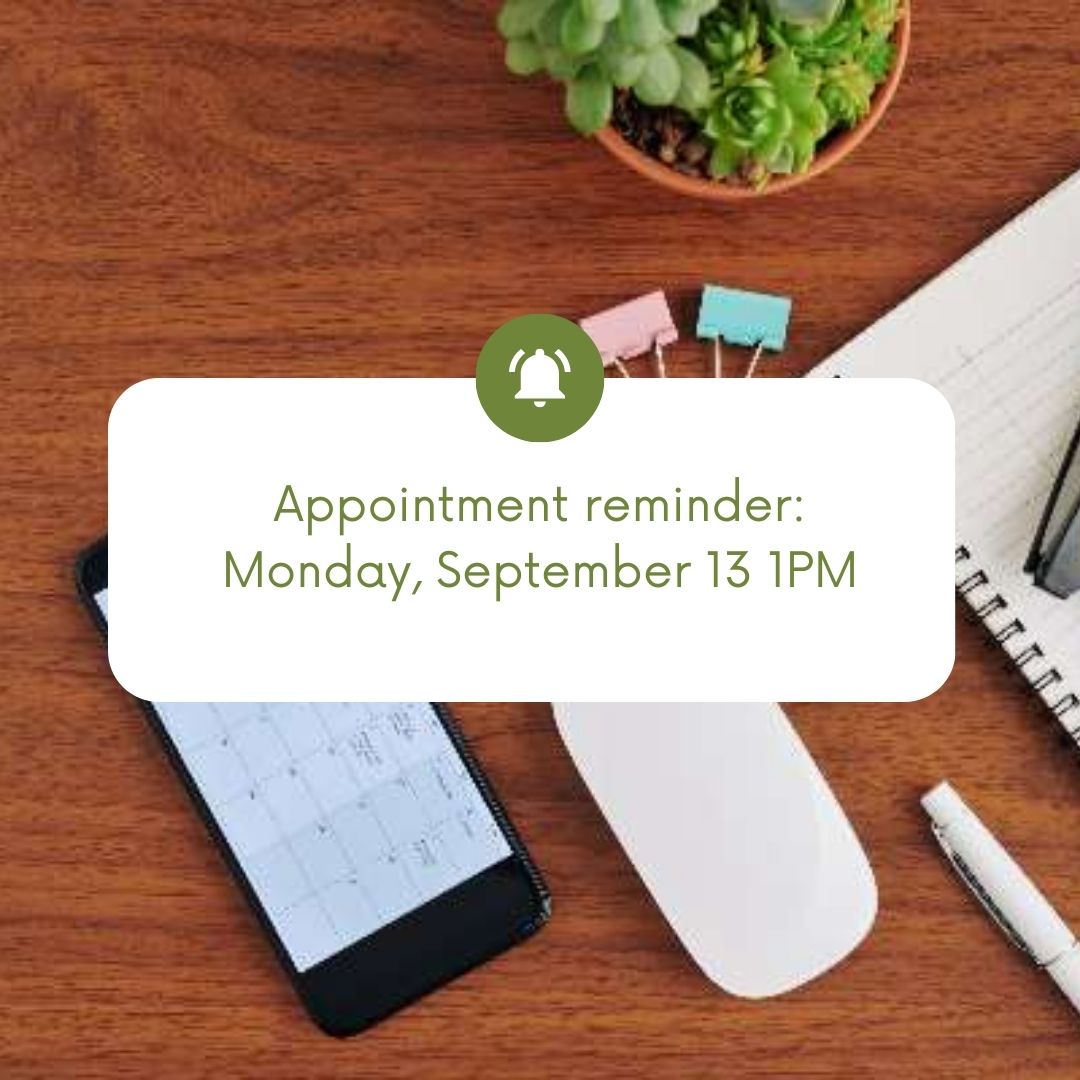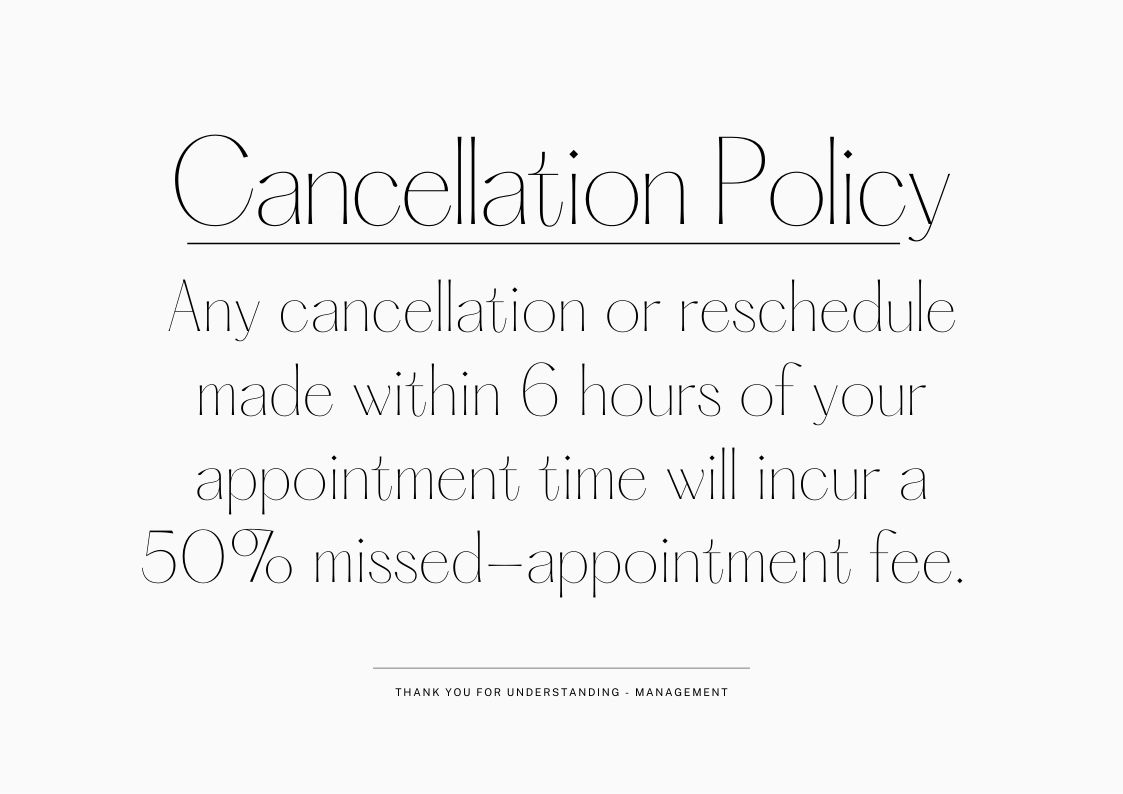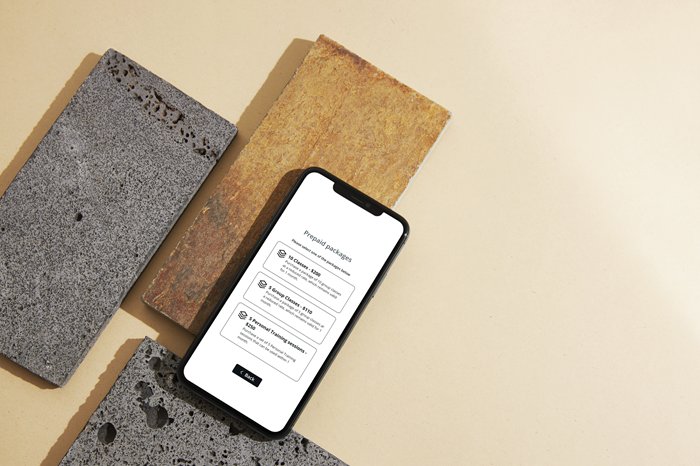
How to Reduce No-Shows and Cancellations at Wellness Businesses
No-shows and cancellations are regular issues for wellness companies. These challenges not only impair everyday operations, but they also directly affect the bottom line. Missed appointments result in lost income, wasted resources, and scheduling inefficiencies that may reverberate throughout the day.
It is the objective of this article to provide readers with practical strategies for reducing cancellations and no-shows by improving communication with clients, utilizing technology, and enforcing appropriate policies.
Here’s what you can expect from this article:
- Understanding the Root Causes: Investigate the most prevalent causes of cancellations and no-shows.
- Effective Booking Policies: Learn how to develop and communicate clear policies that discourage cancellations.
- Automated Appointment Reminders: Experiment with technology to ensure that your clients remain on course.
- Incentives for Commitment: Find out how to encourage clients to stick to their appointments.
- Handling Last-Minute Cancellations: Strategies to manage and fill slots that become available unexpectedly.
By the conclusion of this article, you’ll learn how to properly deal with no-shows and cancellations. It is now time to commence this article by understanding the fundamental causes of these challenges.
Identifying Common Causes of No-Shows and Cancellations
Understanding why clients cancel or miss appointments is the first step in reducing no-shows at your wellness business. These incidents may be attributed to a variety of factors, including simple forgetfulness and more serious ones such as financial worries or last-minute emergencies.

Common Reasons for No-Shows and Cancellations
- Forgetfulness: One of the most straightforward reasons clients miss appointments is that they simply forget. Even the most organized people might forget about their appointed time if they don’t get a reminder, particularly if the appointment was made weeks in advance.
- Financial Concerns: Occasionally, clients may rescind due to the realization that they are unable to afford the service. This is especially true if there’s a significant gap between the booking and the appointment, during which time their financial situation may change.
- Last-Minute Emergencies: Clients may encounter emergencies that prevent them from attending their appointments, as life is unpredictable. Whether it’s a sudden illness, family emergency, or an urgent work obligation, these situations can lead to unavoidable cancellations.
- Fear or Anxiety: Clients may feel anxious at wellness companies, especially those that provide treatments or services that require some amount of pain or vulnerability (e.g., massages, therapy sessions). This concern may cause cancellations, particularly if the customer is a first-timer or has had a past poor encounter.
- Inconvenient Timing: Clients might find that the appointment time no longer fits into their schedule due to work, family commitments, or other personal reasons. If rescheduling is not feasible, they may decide to cancel entirely.
Business Practices That Contribute to Cancellations
While external circumstances are important, your company’s actions may also contribute to no-shows and cancellations:
- Unclear Booking Policies: If your booking and cancellation policies are not clearly communicated to clients, they might not fully understand the consequences of canceling late or missing an appointment. This might lead to more frequent no-shows since customers may not feel obligated to attend their appointments.
- Lack of Reminders: In today’s fast-paced economy, relying on customers to remember their appointments is challenging. You should expect more no-shows if you don’t send out timely reminders. Reminders are essential for getting customers to confirm their presence or tell you in advance if they need to cancel.

- Overcomplicated Booking Process: If your booking process is too complicated or time-consuming, clients may be discouraged from rescheduling if they realize they can’t make it. Instead, they might cancel or, worse, not show up without informing you.
Understanding why clients cancel or miss their appointments allows you to take targeted actions to reduce these occurrences. For example, if you discover that forgetfulness is a serious problem, establishing automatic reminders might be a simple but effective solution.
Conversely, if financial concerns are frequently raised, you may consider implementing flexible payment options or deposit requirements.
Not only does a proactive approach reduce the impact of no-shows on your business, but it also improves the overall client experience.
1. Developing and Communicating Clear Booking Policies
It is crucial for wellness businesses to have clear procedures about bookings and cancellations.
Establishing clear and well-communicated guidelines can mitigate misunderstandings and also help establish a more predictable booking process.
The Importance of Clear Policies
Clear booking and cancellation procedures assist to avoid misunderstanding and ensure that customers understand their duties when arranging an appointment. Without these policies, clients may not realize the consequences of canceling late or missing an appointment. This can result in frustration for both parties: your business may suffer from lost revenue and squandered time, and clients may feel surprised by unexpected fees.

When setting these policies, it’s crucial to be transparent and fair. Clients are more likely to respect and adhere to rules they understand and perceive as reasonable. For instance, consumers may comprehend the significance of the policy by providing an explanation for the necessity of a cancellation charge, such as the cost of a service period that could have been occupied by another client.
Examples of Effective Booking and Cancellation Policies
Here are some examples of policies that wellness businesses can implement to reduce no-shows and cancellations:
- Deposits: Mandating a deposit at the time of reservation can guarantee that customers are dedicated to their appointments. The deposit may be a fixed fee or a percentage of the service cost, and the client has the option of receiving a refund or having the deposit applied to a future engagement if they rescind within the applicable time frame.
- Cancellation Fees: Implementing a cancellation charge for appointments canceled within a certain time range (i.e., 24-48 hours before the appointment) might discourage last-minute cancellations. This fee compensates for the lost opportunity to fill the slot with another client.
- Specific Cancellation Windows: Another effective strategy is to establish a distinct window during which clients may terminate without incurring penalties. For example, a 24-hour cancellation policy enables customers to cancel or reschedule their appointment without incurring a cost as long as they do so at least one day in advance.
- Penalties: Consider implementing a no-show penalty for clients who fail to arrive without prior notification. This might be the whole cost of the service or a considerable percentage of it, acting as a powerful disincentive to missed appointments.
Communicating Policies Effectively
Even the best policies are ineffective if clients are unaware of them. Communication is essential to ensuring that your customers completely grasp your booking and cancellation rules. Here are several ways to effectively communicate these policies:
- During Booking: When clients book an appointment, whether online or over the phone, make sure the policies are clearly stated. If booking online, offer a checkbox for customers to indicate that they have read and agreed to the conditions before finalizing the booking.
- On the Website: Dedicate a section of your website to explaining your booking and cancellation policies. This should be readily accessible, such as in your website’s footer or on the booking page.

- Confirmation Emails: Send confirmation emails that contain appointment information, as well as a reminder of the cancellation window and any costs that may apply if they cancel late or do not show up.
- In-Person Communication: Take the time to clarify your rules directly to customers who schedule sessions in person. Make sure they comprehend the terms before they commit.
By clearly establishing and consistently communicating your booking and cancellation policies, you can create a smoother experience for both your clients and your business.
2. Utilizing Automated Appointment Reminders
Wellness organizations that wish to mitigate their absence rates should implement automated appointment reminders. Your customers will be more likely to remember or avoid scheduling conflicts if you remind them of their future appointments in a timely manner.
How Automated Reminders Work
Automated reminders function by transmitting messages to clients via electronic means, including SMS or email. This reminder serves as a prompt for clients to confirm, reschedule, or rescind their appointments in advance, allowing you to adjust your schedule as needed.
Automated reminders function by transmitting messages to clients via electronic means, including SMS or email.
Types of Automated Reminders
There are several different types of automated reminders:
- SMS Reminders: Text message reminders are particularly effective due to their high open rate and direct nature. SMS is an optimal method for capturing the attention of the majority of clients, as they frequently consult their phones. A straightforward, succinct message that serves as a reminder of the specifics of their appointment can significantly contribute to their punctuality.
- Email Reminders: Unlike with SMS, you may be more specific in your email about things like time, location, etc. This format provides a more thorough reminder that customers may refer to as required.

Concerning the Timing and Frequency of Reminders
To make sure your reminders are useful without being intrusive, use these guidelines:
- Multiple Reminders: It’s typically a good idea to send multiple reminders. For example, you may send an initial reminder 48 hours before the meeting, allowing customers to make any required preparations. Then, on the day of the appointment, you can send a second reminder.
- Customization: Tailor the timing of reminders to suit your business and client base. Some clients may prefer a reminder a week in advance, while others might only need a day’s notice. Offering options throughout the booking process may improve the efficacy of your reminders.
- Avoid Overloading: While reminders are helpful, too many can become annoying and counterproductive. Avoid overloading customers with several communications and stick to one or two well-timed reminders instead. This way, we can keep customers updated without wasting their time.
Bookeo’s Reminder Features
It is critical to use the correct technology when introducing automatic reminders into your booking process. Bookeo provides a comprehensive reminder system that accommodates SMS and email notifications. This allows you to customize the frequency and scheduling of reminders to meet the unique needs of your business.
With Bookeo, it is effortless to establish automated reminders. You can keep your clientele informed and engaged, reducing no-shows and cancellations in the process.
3. Offering Flexible Booking Options
In today’s fast-paced world, flexibility is essential for both customers and companies.
Flexible scheduling choices may considerably reduce the number of cancellations. Clients are more likely to follow through on their promise when they may postpone or change their meetings online.
For example, allowing customers to reschedule online up to a particular time before the appointment (i.e., 24 hours) might encourage them to alter their reservations rather than cancel completely.
Streamlining and Simplifying the Booking Process
The ease and convenience of booking your services will also play an important part in lowering cancellation rates. A user-friendly booking system that allows clients to quickly find and book appointments at their preferred times can enhance their experience and commitment.
Here are some tips to make the booking process more convenient:
- Online Booking: Provide a user-friendly platform that enables clients to easily schedule and reschedule appointments online. It is essential that online booking systems are accessible on both desktop and mobile devices, enabling clients to manage their appointments from any location.

- Adjustable Scheduling: A variety of appointment hours, including mornings, evenings, and weekends, may accommodate clients with diverse schedules. The likelihood of clients canceling due to scheduling conflicts decreases as the number of options they have increases.
- Reminder Systems: As previously mentioned, the registration process can be improved by the implementation of an automated reminder system, which provides clients with timely reminders to manage their appointments. By enabling clients to reschedule directly from the notification, you can further boost client experience.
Striking a Balance Between Structure and Flexibility
While flexibility is certainly beneficial, it is still necessary to keep a regular schedule to facilitate smooth operations. Here’s how to strike a balance:
- Set Clear Guidelines: Establish explicit rescheduling standards, such as requiring changes at least 24 hours in advance. This helps to avoid last-minute changes that might upset your routine.
- Limit Same-Day Changes: Consider restricting the option to reschedule on the same day as the appointment, since this might cause holes in your calendar that are difficult to fill.
- Monitor Trends: Monitor rescheduling trends to identify any patterns that may necessitate modifications to your scheduling policy. If you see a high number of last-minute reschedules, for example, you may lower your rescheduling window or institute a small fee.
As you can see, offering flexible booking options is a strategic approach to reducing cancellations and improving client satisfaction.
4. Enhancing Client Engagement and Communication
Building good customer connections is essential for decreasing cancellations and no-shows in wellness companies. When customers feel appreciated and involved, they are more likely to keep their appointments and stay loyal to your services. In order to cultivate these relationships, it is imperative to implement strategies such as personalized communication, consistent check-ins, and actively pursuing client feedback.
Strategies for Building Strong Client Relationships
- Personalized Communication: Personalized communication goes beyond generic messages. Consider the unique preferences and requirements of each client and address them by name in emails and messages. Some examples of this kind of communication include sending birthday wishes, personalized health advice, and reminders of previous services. Clients are more likely to adhere to their appointments when they receive personalized attention and feel valued.
- Follow-Up Calls or emails: After an appointment, a simple follow-up call or email to ask about their experience shows that you care about their well-being. Additionally, this approach will provide you with an accurate assessment of the effectiveness of your services, in addition to enhancing communication between your organization and its clients.
The Role of Regular Check-Ins
Regular check-ins can be effective in preventing cancellations in addition to sending automated reminders. During these check-ins, you may remind them about their forthcoming visits while also giving them the chance to express any concerns.
For example, a quick call or text a week before their appointment can help confirm their commitment or address any scheduling issues they might have.
Additionally, check-ins offer your clients the chance to communicate any modifications in their preferences or requirements. This proactive approach ensures that your services remain consistent with the current circumstances of your clients, thereby preventing cancellations.
Using Customer Feedback to Improve Services
Client feedback is indispensable for optimizing your services and decreasing the number of no-shows. Encourage clients to express their opinions through surveys or direct conversations. Analyze this feedback to identify areas where your service might need improvement.

For example, if clients mention that they frequently encounter difficulties reserving appointments, you may need to streamline your scheduling process or provide additional time slots.
By integrating feedback into your business practices, you not only increase client satisfaction but also demonstrate that you appreciate their input, which can decrease the probability of cancellations.
5. Incentivizing Commitment with Loyalty Programs
Loyalty programs are an effective method for motivating clients to maintain their appointments and remain involved with your wellness business. By providing incentives such as discounts, rewards, or exclusive benefits, you can encourage clients to attend on a regular basis and cultivate enduring loyalty.
How Loyalty Programs Encourage Commitment
The premise of customer loyalty programs is to incentivize repeat business by providing benefits to loyal customers. For instance, you could provide points for each appointment attended that can be redeemed for discounts on future services. This fosters a sense of value and motivates clients to prioritize their appointments in order to receive rewards.
In addition to points-based systems, you may also provide clients with incentives, such as a discount on their subsequent visit, for attending a specified number of consecutive appointments without canceling. Rewards of this nature not only reduce no-shows but also fortify the client’s attachment to your organization by fostering a sense of appreciation.
Examples of Successful Loyalty Programs
Many wellness businesses have successfully implemented loyalty programs to reduce cancellations and build client loyalty:
- Spa Loyalty Cards: Some spas provide loyalty certificates that allow clients to accumulate stamps for each visit. Upon accumulating a specific number of stamps, they are granted either a discount or a complimentary service. This straightforward yet efficient strategy encourages repeat visits.

- Massage Memberships: Membership schemes are common in massage parlors, where customers pay a flat rate for a predetermined amount of sessions each month. As a member has already made an upfront investment in their wellness routine, they are less likely to cancel.
Designing a Program That Aligns with Business Goals
When developing a loyalty program, it is critical to ensure that it aligns with your company objectives. Consider the following tips:
- Keep It Simple: A simple program is easier for customers to grasp and engage in. Steer clear of regulations that are excessively intricate and may serve to deter participation.
- Service-Reward Alignment: Encourage customers to return by providing incentives, such as complimentary sessions or discounts on popular services after a specified number of appointments. This not only encourages clients to attend, but also advertises your most valuable products.
- Monitor and Adjust: Conduct regular evaluations of the program’s efficacy by monitoring customer feedback and participation rates. Make adjustments as needed to ensure that the program continues to meet both client expectations and business objectives.
By establishing a well-designed loyalty program, you can successfully decrease cancellations, increase client retention, and improve the overall success of your wellness business.
6. Handling Repeat Offenders
Any wellness enterprise faces a significant challenge in managing clients who frequently cancel or fail to attend. Maintaining consumer relationships is crucial; however, it is equally essential to enforce policies that safeguard your revenue and time.
Below are some effective strategies you can try for managing repeat offenders:
- Require Upfront Payments: Consider adopting an advance payment policy for customers who often cancel or fail to show up. This not only guarantees their commitment but also provides compensation to your organization in the event that they are unable to attend. For instance, you may require full or partial payment at the time of reservation for these consumers.

- Limit Booking Privileges: Another effective approach is to restrict the registration privileges of chronic offenders. Making the scheduling procedure more limited will encourage these customers to take their appointments more seriously.
Balancing Firm Policies with Customer Retention
Although policies must be enforced, it is crucial to maintain a balance between firmness and consumer retention. Demonstrate consistency and clarity in your communication of policies, while also demonstrating flexibility and comprehension when necessary. Consider offering a one-time exception or a rescheduling opportunity to a client with a history of cancellations who has a legitimate reason for missing an appointment.
Implementing Policies While Preserving Client Relationships
It is imperative to maintain a respectful and professional tone in all communications in order to enforce policies without alienating clients. Make sure to provide detailed explanations for any actions taken and consistently propose solutions, such as applying deposits to future appointments or rescheduling. Carefully managing the situation will safeguard your business and foster positive client relationships.
7. Measuring Success and Adjusting Strategies
To validate the effectiveness of your plan for reducing no-shows and cancellations, track and assess the appropriate indicators over time. By monitoring these metrics, it will be possible to determine which processes are effective and which require modification.
Tracking Key Metrics
Keep close tabs on important metrics like:
- Cancellation Rates: The percentage of customers that fail to show up for their scheduled appointments within a certain time frame.
- No-Show Rates: The percentage of clients who fail to attend their appointments without prior notice.
- Client Retention: The percentage of clients who continue to book appointments after their first visit.
Booking software like Bookeo makes it simple to create data on no-shows, cancellations, and other key information.
Analyzing Data and Continuous Improvement
Identify patterns on the gathered data so you can find out areas of improvement. Refine your tactics over time as a result of your analysis. For example, if you observe that specific sorts of appointments have greater no-show rates, you may consider changing your booking restrictions or providing more reminders for those services.

Client feedback is also invaluable. Regularly solicit feedback from customers on your booking process, reminder mechanisms, and overall experience. Utilize this feedback, in conjunction with your performance data, to make well-informed decisions that improve client satisfaction and decrease the number of no-shows.
Conclusion
A comprehensive strategy is necessary to decrease the number of no-shows and cancellations in a wellness business. In this article, numerous critical strategies have been delineated, such as the establishment of explicit booking policies, the utilization of automated reminders, the provision of flexible scheduling options, and the implementation of loyalty programs. appointments, ensuring your business runs smoothly and profitably.
A multifaceted approach is essential to address the various reasons clients may cancel or miss appointments. Wellness businesses can substantially mitigate the disruption caused by no-shows and cancellations by proactively implementing these strategies, which will result in increased revenue and enhanced client satisfaction.
Ready to take control of your appointment scheduling? Try Bookeo’s appointment scheduling software with a free trial. Bookeo offers features that help manage health and wellness appointments and reduce no-shows effectively. Sign up today to see how Bookeo can streamline your booking process and support your wellness business.

